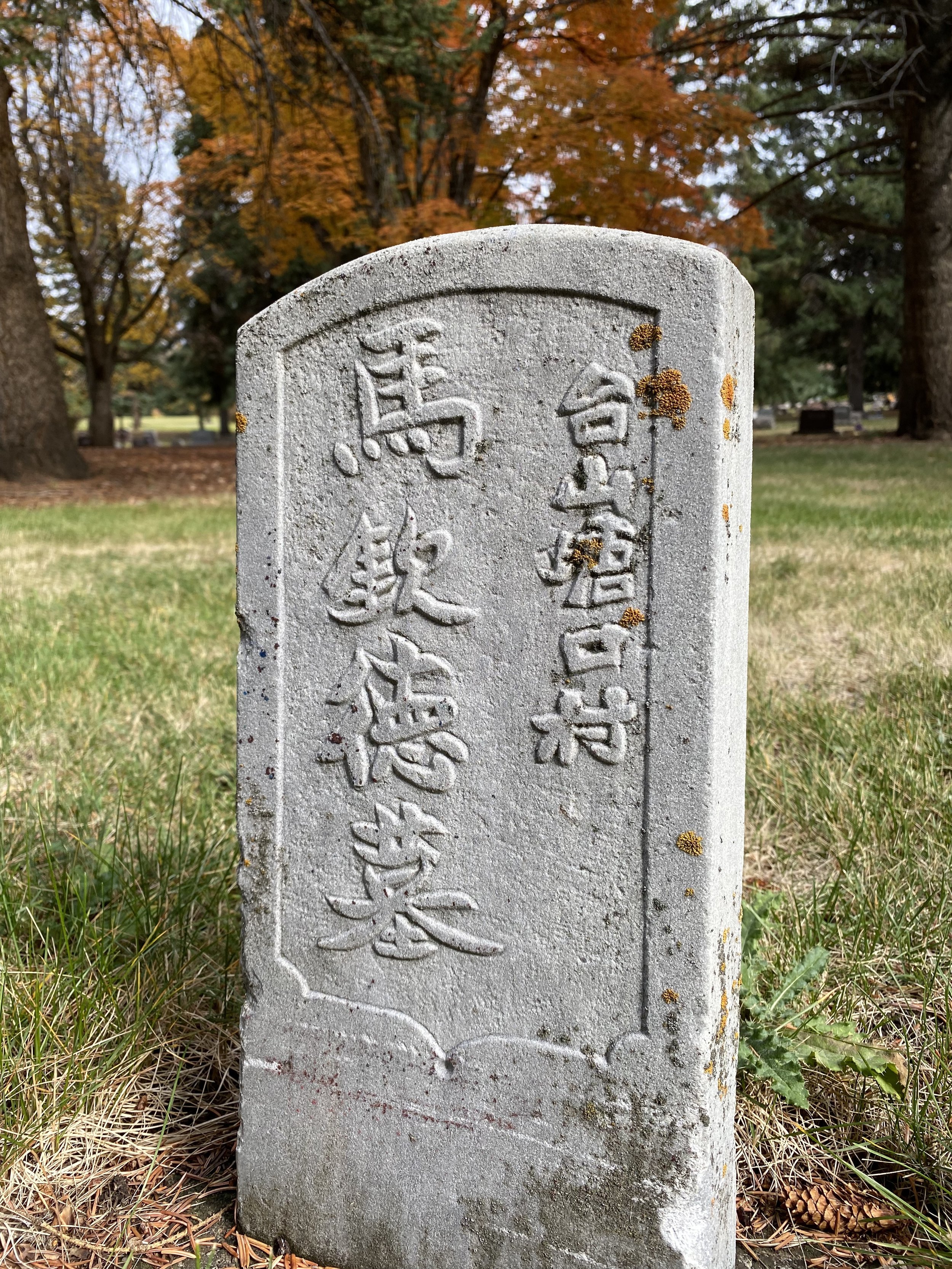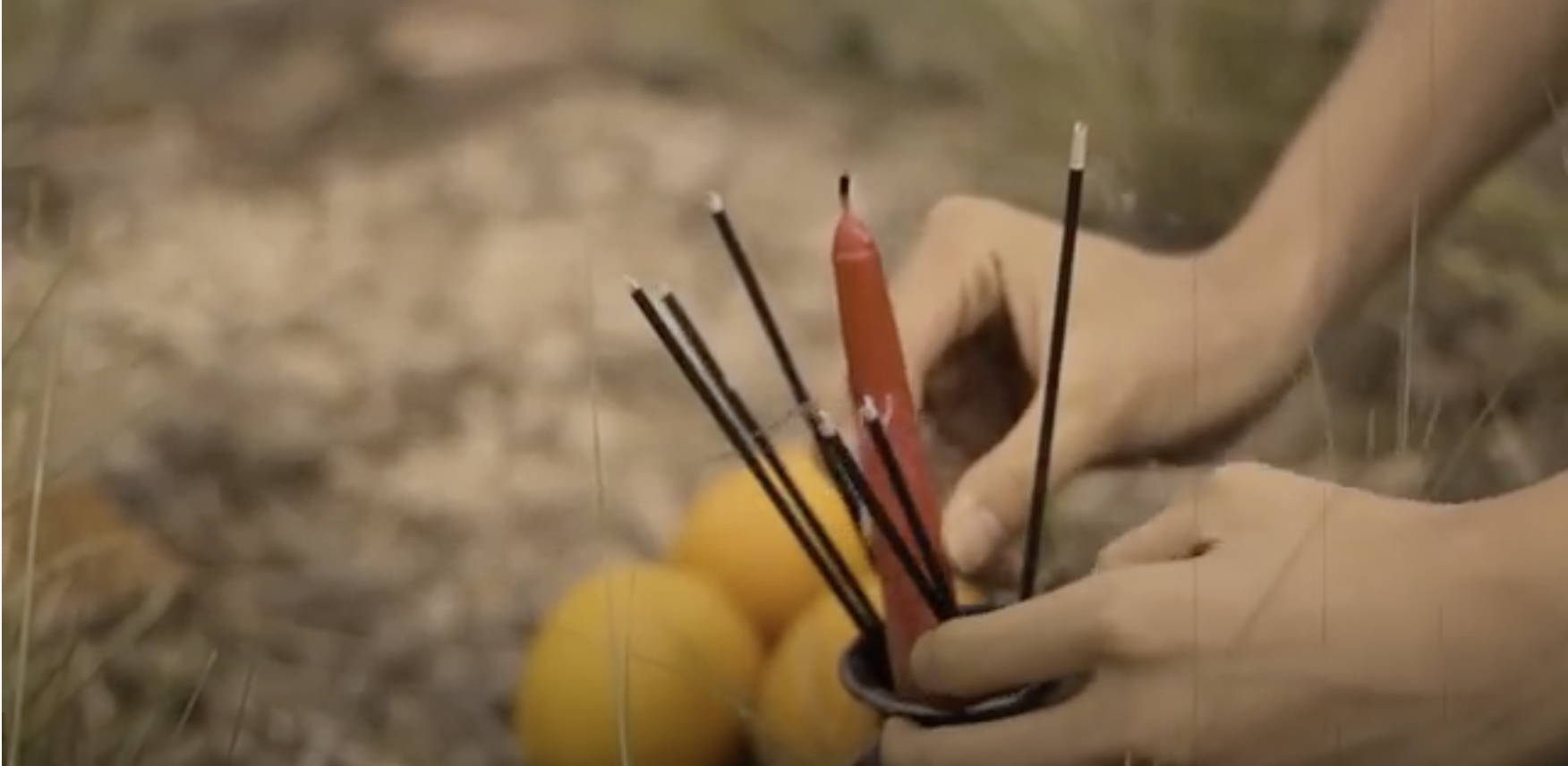
Montana’s Chinese Cemeteries: Translating and Interpreting What Remains
Montana’s Chinese population peaked at more than 2,500 in 1890. With Chinese communities large and small spread throughout the region, Chinese burial sites also exist across the state. Sadly, many are lost to history. Most of Montana’s Chinese residents who died while living in the Big Sky state hoped their remains would be exhumed and sent back to China for reburial, in keeping with the culture of their home region (for details on this practice, click here). Still, four Chinese cemeteries remain with headstones featuring Chinese characters. A project funded by the Foundation for Montana History and in partnership with the Mai Wah Museum allowed for the translation of these headstones, identification of the individuals commemorated, and research into their lives and experiences while they lived in Montana. Additionally, working with My China Roots, the home villages in southern China for more than thirty of these individuals commemorated on the headstones were identified. For details on the translation project and village location process, click here.
This map indicates known locations of grave sites for Chinese Montanans (zoom in to see details and areas with large clusters of sites; click on markers for details). Many burial sites across the state are as yet undiscovered and possibly lost to history.
Sites marked with a star indicate that the home village in southern China for the person commemorated has been identified. See the map below for the corresponding home village locations.
This map shows the locations in southern China that are indicated on the headstones in Chinese cemeteries across Montana. The color codes correspond to where in Montana the headstones are located: Red = Helena; Yellow = Bozeman; Purple = Billings; Blue = Butte.
The home region of most Chinese Montanans was beset by severe hardship during the mid-to-late 19th century. Natural disasters, including floods, famines, epidemics, typhoons, earthquakes, and droughts made life in southern China difficult. Additionally, wars and rebellions worsened hardship. As one migrant noted, men from southern China took on the obligation to “climb thousands of mountains and cross tens of thousands of rivers for no other reason than the livelihood and happiness of the family.”
Bozeman’s Sunset Hills Cemetery
Bozeman’s Chinese community numbered more than 70, reaching its height around 1905. Bozeman, Montana’s Sunset Hills Cemetery has several beautifully preserved Chinese headstones.
For details on the Chinese section of Bozeman’s Sunset Hills Cemetery, click here.
Butte’s Mt. Moriah Cemetery
Butte’s Chinese community, the largest in the Rocky Mountain region, reached its peak of around 1,000 in the 1890s. Butte’s Mount Moriah Cemetery has a large remaining collection of headstones commemorating the city’s Chinese residents. Butte’s Mai Wah Society hosts an annual Qingming Festival (Tomb Sweeping Day) to commemorate Butte’s once large Chinese community and remember the contributions and lives of those who passed on.
For more details on the Chinese section of Mount Moriah Cemetery, click here.
Helena’s China Row Cemetery
In 1870, the Chinese community of Helena comprised more than 20% of the city’s total population. Drawn to the area for mining, most of Helena’s Chinese eventually transitioned to laundry and restaurant work and gardening, which provided key nutritional diversity for the mining camp. Helena’s Chinese cemetery, “China Row,” is outside the grounds of the well-kept Forestvale Cemetery. Cemetery records show that more than 200 people were interred at China Row. About ten markers remain. At China Row, there is extensive evidence of remains being exhumed for reburial in China, a process documented well into the 1940s.
For details on Helena’s China Row Cemetery, click here.
Kalispell’s Demersville Cemetery
The Chinese population of Flathead County peaked in 1910 at just over 60 residents. Most Chinese residents of the region lived in Kalispell or Whitefish. The community used Kalispell’s Demersville Cemetery, with cemetery records indicating at least 18 Chinese burial sites.
For more details on the Chinese section of Kalispell’s Demersville Cemetery, click here.
Missoula’s Lost Chinese Cemetery
Missoula’s Chinese community peaked at close to 100 inhabitants. The community used a burying ground at the base of Mt. Jumbo in the Lower Rattlesnake neighborhood. Funerals for members of Missoula’s Chinese community are noted in newspapers, as well as the mass interment of those who died while working on railroad construction. Missoula’s growth as a city and the decline of the Chinese population of the region caused the cemetery to be built over by a residential neighborhood. Efforts are underway to research and commemorate this important historical site.
For more details on Missoula’s historic Chinese cemetery, click here.
Mountview Cemetery, Billings
Mountview Cemetery in Billings, Montana has a number of headstones from the largest Chinese community in eastern Montana. Billings had close to 100 Chinese residents in 1900. In terms of burial processes, Billings served as a regional collection point for exhumed remains to be collected and returned to China for reburial. Chinese communities from eastern Montana, Wyoming, North and South Dakota, and Nebraska coordinated this important cultural practice through Billings.
For details on the Chinese section of Mountview Cemetery in Billings, click here.
KTVH: Grant funds research on Chinese cemeteries in Montana
Researchers working to uncover the history of Chinese immigrants in Montana, coverage by KTVH in Helena, Montana.
China Row
Student-made film about Helena, Montana’s China Row Cemetery and Chinese burial practices in Montana.
To explore more about the experience of Chinese Montanans, check out The Middle Kingdom under the Big Sky (University of Nebraska Press, 2022). Chapter 6 deals specifically with Chinese and Chinese American burial and religious practices.
To order, click here. Use code 6AS22 for 40% off!











